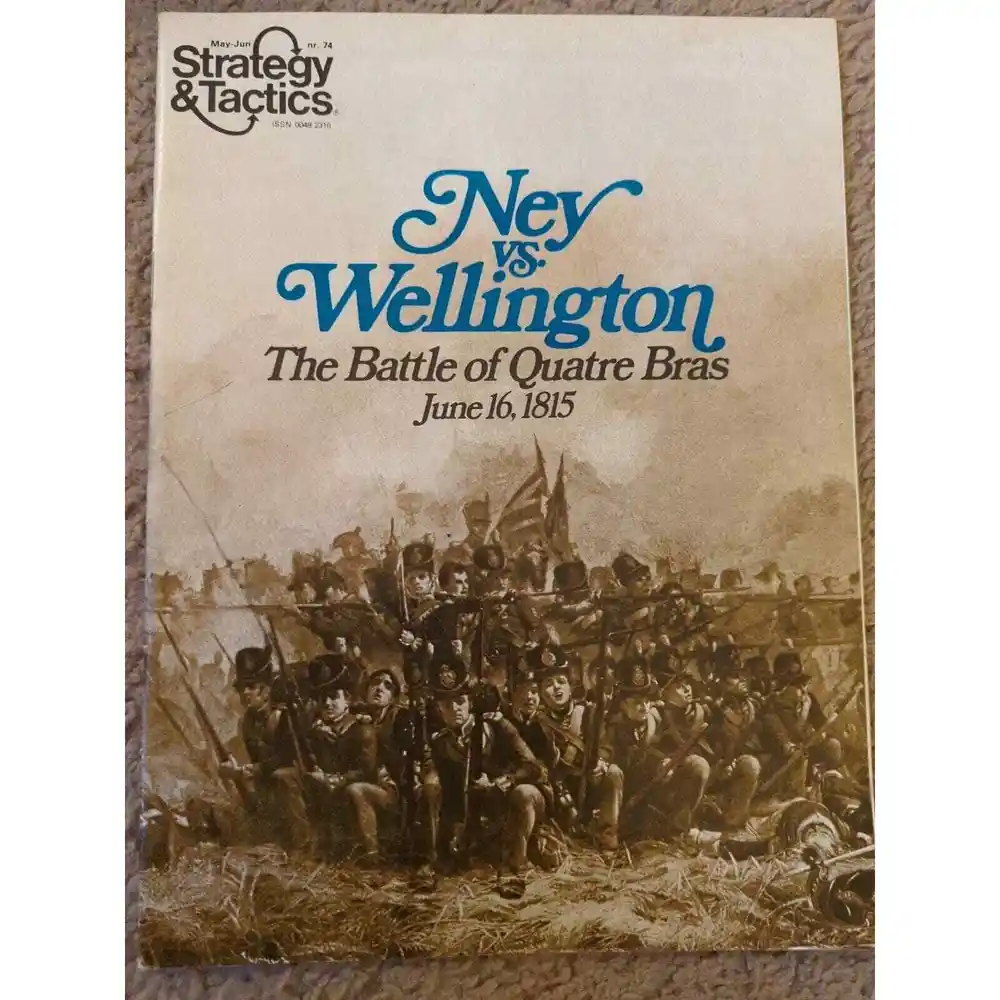Ney vs. Wellington: The Battle of Quatre Bras (1979)
Ney vs. Wellington: The Battle of Quatre Bras
Ney vs. Wellington: The Battle of Quatre Bras is a board wargame that simulates the Battle of Quatre Bras, which took place on June 16, 1815, two days before the Battle of Waterloo. The game was published by Simulations Publications Inc. (SPI) in 1979. The battle was fought between the French under Marshal Ney and the Anglo-Dutch under the Duke of Wellington. The French were attempting to capture the strategic crossroads at Quatre Bras, while the Anglo-Dutch were trying to prevent them from doing so.
Why is Ney vs. Wellington: The Battle of Quatre Bras Popular?
Ney vs. Wellington is significant because it is a historically accurate simulation of a major battle in the Napoleonic Wars. The game is popular among wargamers who enjoy historical simulations and recreating famous battles.
Game Components of Ney vs. Wellington: The Battle of Quatre Bras
How To Setup Ney vs. Wellington: The Battle of Quatre Bras
Setup involves placing the counters on the mapboard according to the historical deployment of forces. The French forces, commanded by Marshal Ney, and the Anglo-Allied forces, led by the Duke of Wellington, are positioned based on the initial dispositions of the Battle of Quatre Bras. Players need to carefully follow the setup instructions to ensure the historical accuracy and balance of the game.
Gameplay Mechanics and Game Objective
Player Experience
Playing **Ney vs. Wellington** requires a deep understanding of Napoleonic-era warfare tactics and the specific mechanics of the game. Players must manage unit morale, cohesion, and positioning carefully to achieve their objectives. The game challenges players to balance aggressive maneuvers with the need to maintain unit integrity, especially given the vulnerabilities of the Coalition forces against French columns.
Pros
Cons
Personal Thoughts on Ney vs. Wellington: The Battle of Quatre Bras
**Ney vs. Wellington** is ideal for experienced wargamers and those with a deep interest in Napoleonic-era military history. It offers a challenging and immersive experience that rewards strategic thinking and historical knowledge. However, it may not be the best fit for casual gamers or those new to wargaming due to its complexity and historical specificity.
We are supported by our audience. When you purchase through links on our site, we may earn an affiliate commission, at no extra cost for you. Learn more.

